Flowers and plants that behave like animals are bizarre and awesome
Science
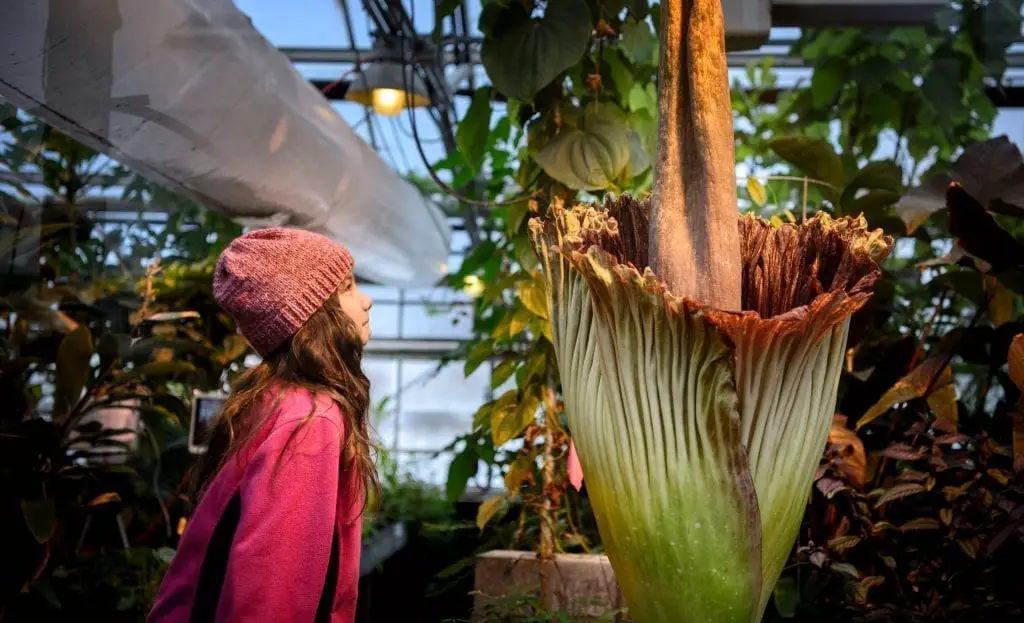
1. This plant is basically a chameleon
Star Tribune
Plants are capable of some astounding things, but it’s not always obvious what they’re doing. While most people see plants as food or building materials, or just that thing that makes your house look nice, they are living, respiring organisms. They have their own lives and they were here before us, but humans have mostly dismissed them as immobile, unfeeling parts of the landscape. Well, science says that’s not so. New research has shown plants are a lot more nuanced than they appear to be at first glance. So maybe you’ll rethink letting your plants die out of neglect, because they’re living creatures, too.
Chameleons are famous for their camouflaging abilities, and so are other animals like octopuses and butterflies, but this plant is just as good. It’s called the chameleon vine and it can mimic eight different types of plants by changing its leaf shape, size, vein pattern, and spininess. On the same vine, it can mimic multiple plants at the same time.
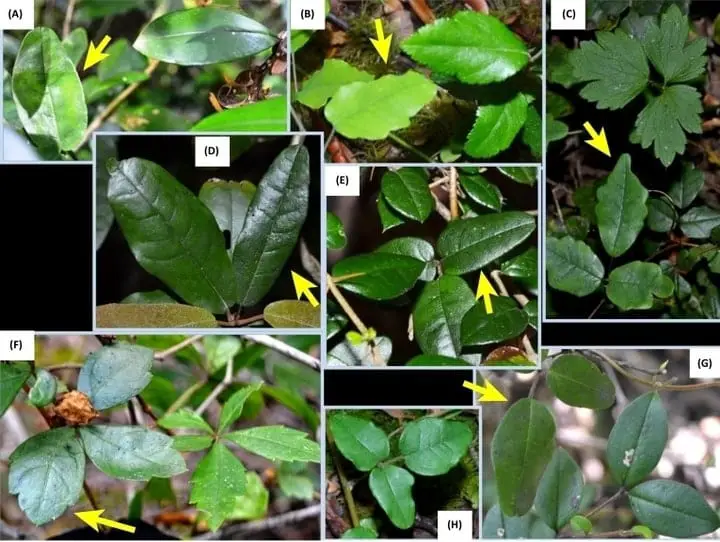
Cell Press
It does this mimetic polymorphism to hide from things that might want to eat it, but no one is really sure how it does it. The vine doesn’t have to be touching the plant it’s mimicking, so maybe it senses chemical signals from nearby plants. Or maybe it sees them with light sensing structures that can detect color and shape. It wouldn’t be the only plant with animal-like senses.
2. Orchids seduce insects
People use flowers for romantic gestures, but flowers themselves can seduce insects too. Some orchids in particular do a little bit of trickery; their beautiful and odd shaped flowers are not for our enjoyment, but instead for the enjoyment of male bees and wasps. The flowers look and smell like females, so they attract males looking for mates.
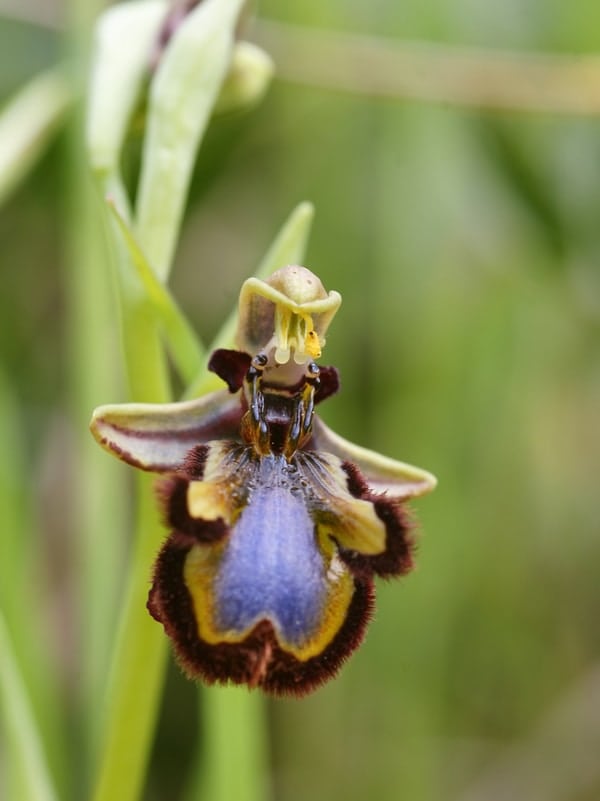
Orchids Plus
A male lands on the flower, tries to mate with it, and winds up getting the plant’s pollen all over him. He then tries to go mate with another flower and transfers the pollen, enabling the plants to reproduce. While most flowers reward animals for pollinating them, by providing some nectar, these male insects are left with nothing but a waste of time. Another type of flower manipulates insects in a different way…
3. Plants can kidnap insects
Some flowers are notorious for smelling like gross, rotten meat. They do this to attract flies and beetles to pollinate them, but some take it a step further. Perhaps too far, if you ask the flies. One plant in particular, the affectionately named dead horse arum lily, lures flies into its flower and then traps them with spines.
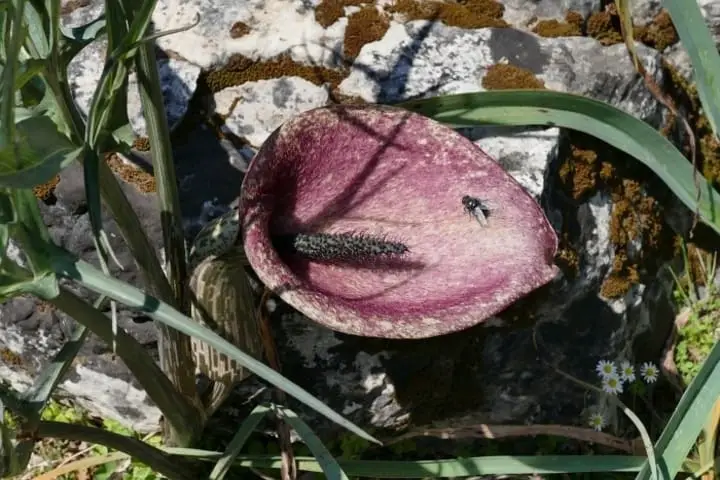
fieldherping.eu
The flies deposit pollen onto the female flower parts and then are stuck there overnight as the male flower parts mature. Once the flower has made new pollen, the trapping spines wilt and the flies are free to go. But they must pass through the pollen to get outside, where they then fall into the next flower’s trap.
4. This plant calls in backup for a fight
If you’re being attacked, you might call on your friends for backup. Or at least that’s what they do in movies. It turns out that cotton plants do the same when they’re being eaten by caterpillars. They release chemicals that attract parasitic wasps. The wasps fly on over and see the juicy caterpillars as a perfect home for their eggs.

Xconomy
The female wasps inject their eggs into the caterpillars, because it’s a great place to raise a family. The eggs then hatch inside the living caterpillar and eat it, eventually killing it. While it’s a horrible end for the caterpillar, it’s great for the cotton plant who can now go on about its day without being munched on.
5. Plants can be predators
Most people have heard of the Venus flytrap, which traps animals and devours them, but there are quite a few types of predatory plants. One peculiar looking one is the sundew, which is covered in hairs that have sticky dew-like droplets on them. These tentacles trap small animals so the plant can eat them.
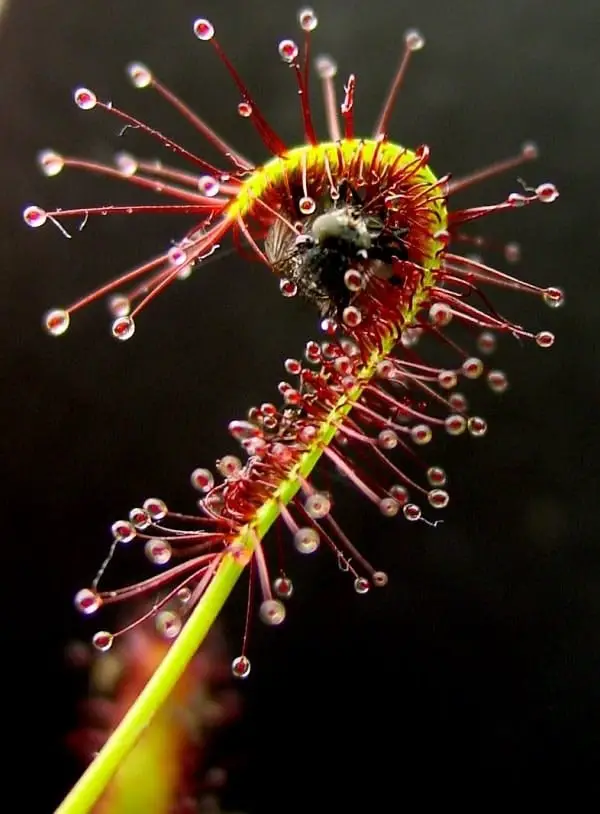
Wikipedia
Most plants can absorb nutrients with their roots, but carnivorous plants often live in places that don’t have a lot of nutrients, like swamps. The plants particularly want nitrogen, which is what we fertilize our crops with. They still photosynthesize, but they just supplement that with a little insect appetizer. But how do they digest animals?
6. Plants set traps for their prey
Lurking in the water is another carnivorous plant, the bladderwort. Its stems float on water, with bladder shaped traps hiding underneath. When their trigger hairs are touched by a small animal, they suck it in and digest it in about 15 minutes. The bladder traps have low pressure inside them, which allows them to quickly draw in prey and water.
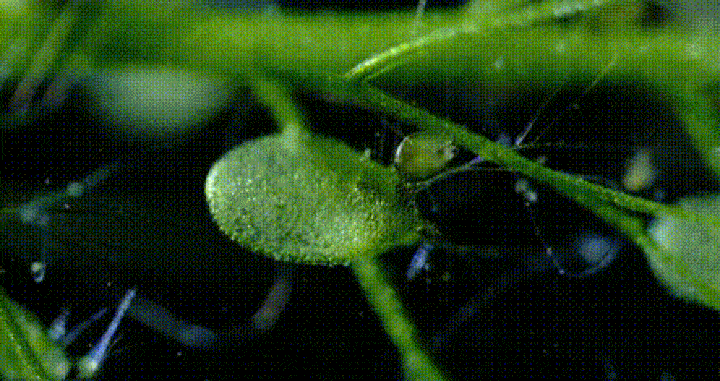
francischeefilms
Carnivorous plants like the bladderwort and sundew use enzymes or bacteria to chemically breakdown their animal meals. The plant then absorbs the nutrients caught in its trap. Their traps are actually oddly shaped leaves that vary widely in shape and size. However, a few carnivorous plants are leaving the predatory lifestyle and eating something extremely gross.
7. Plants have toilets too
A few pitcher plant species in the genus Nepenthes like to munch on ants, and occasionally larger animals like rats and frogs, but they have developed an even weirder food preference. The plants have to lure it in, so near the mouths of their massive urns, they produce a sweet substance. The sugar attracts the local tree shrews, who come to sit on the pitcher and lick up the sweet treat.
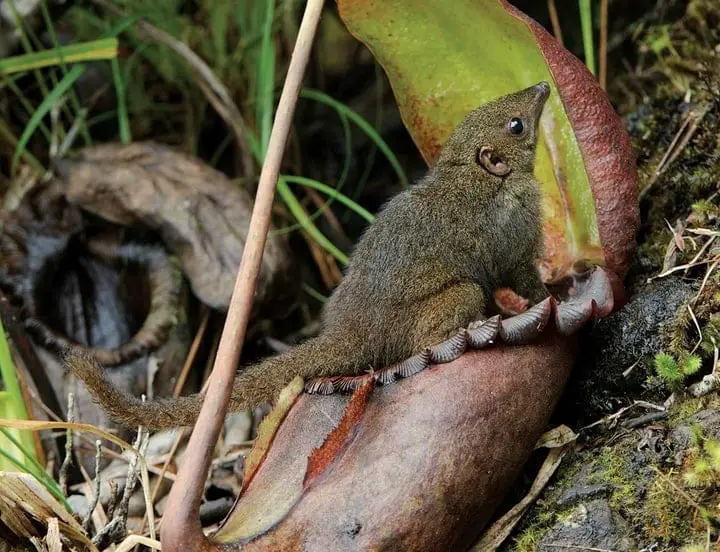
New Scientist
And while the shrew sits there eating, it defecates right into the pitcher. It’s a buffet and toilet all in one for the shrew, but what does the plant get? Scientists think the plant then eats the droppings, consuming its precious nitrogen. While the pitcher plant had to make the food, the next plant takes matters into its own leaves and steals nutrients.
8. This vine sniffs out its victims
While some plants prefer to eat unsuspecting animals, this vine winds its way around unfortunate plants. It’s a bit like a vampire, because it penetrates its victims and steals their nutrients and water. This parasite is called the dodder vine. “It is remarkably snakelike in the way it behaves,” said Anthony Trewavas, a pioneer of the idea that plants have intelligence.
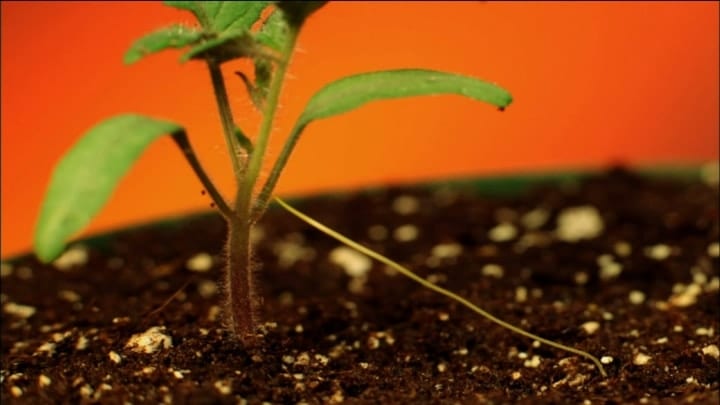
PBS
The dodder initially grows as a thin little stem and then it picks its victim, somehow choosing where to go based on the scent of the plants around it. Research has even shown that it prefers tomato plants over wheat. It isn’t photosynthetic, so it must leech off of other plants to live.
9. Do plants like it when you talk to them?
Many plant enthusiasts have talked to their plants, or played music for them, and insisted that it helps them grow. Well, the whole “plants like classical music” thing has been largely debunked, but the talking thing is still up in the air. It’s possible that talking to plants increases the carbon dioxide around them, which they use for energy, and helps them grow.

BillyOh/Twitter
It’s also possible that people who talk to their plants just pay closer attention to their plants’ needs, and thus take care of them better. But maybe it really is your voice affecting them, because it’s similar to the vibrations of wind. While scientists aren’t sure about if plants respond to human speech, they have proven plants listen to other things in nature…
10. Plants can hear, even though they don’t have ears
Some scientists heard the talk about plants responding to various sounds and wondered how this would make sense in the wild. So they did an experiment: they played a recording of caterpillars munching to the plants and saw something very interesting happen.

Modern Farmer
Plants that heard the caterpillar sounds ramped up their defense by making more chemicals in their leaves to ward off any threats. It’s not entirely clear how the plants hear, but some think they use proteins called mechanoreceptors. These take small disturbances, perhaps like the vibration of a sound, and turn them into signals that move through the plant.
11. Plants lead a double life: above and below ground
It might be that the part of the plant no one sees is actually the “smartest”: the roots. Roots keep the plant anchored, take in water and minerals, and store extra food. Roots grow in the soil and have to seek out water, so how do they do that?
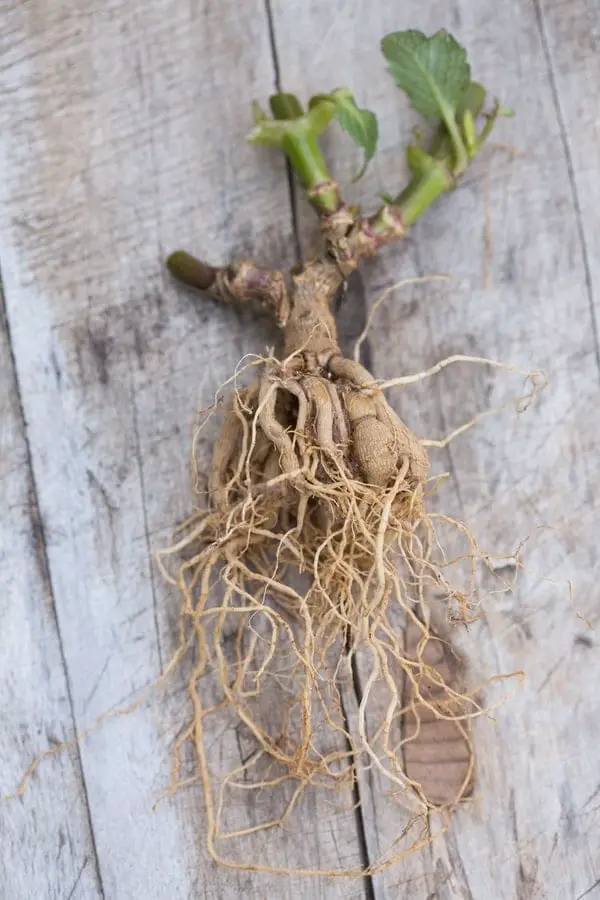
Gardenista
Well, the end of a root is actually made up of distinct parts that each do a different job. The very tip is called the root cap and it senses everything from gravity to humidity to light to oxygen. Further up is a region called the elongation zone, which moves the root by lengthening or bending as needed. However the area in between seems to act like a particular animal organ…
12. Plants have a hidden “brain”
In between the root cap and the elongation zone is the aptly named transition zone. Some scientists believe it is a sort of brain for the root. The cells in the transition zone move hormones around in a way that’s very similar to how animal brains do so. These cells also consume a lot of oxygen, just like animal brains.
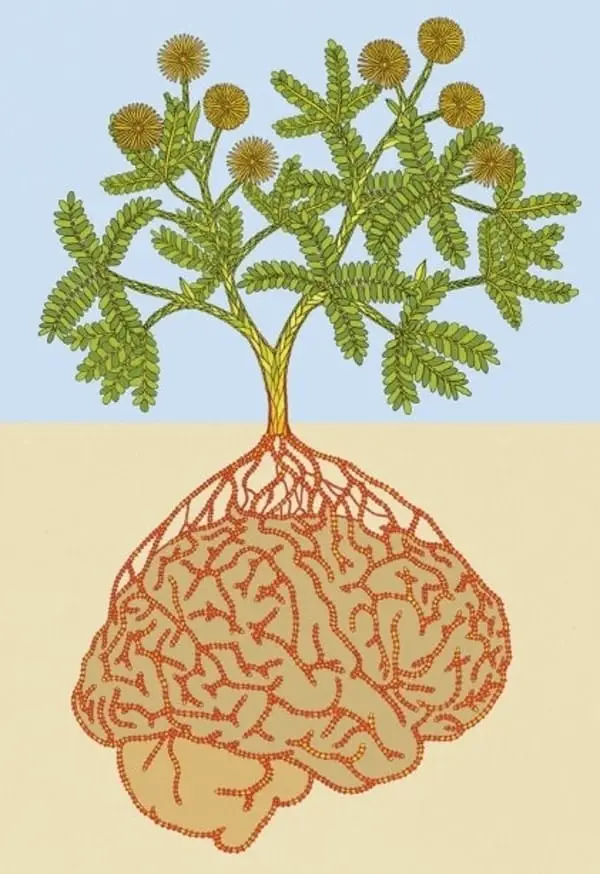
New Scientist
This transition area is also electrically active, like a brain. Some scientists think the transition zone takes sensory info gathered from the root cap and translates it into commands for the elongation zone, effectively controlling the root’s behavior. Research is slowly showing that you don’t need a nervous system to do everything.
13. This plant has short term memory
Certainly no one thought something could have memories without a brain, but it seems quite possible now. Venus flytraps are well known for eating insects, but they don’t eat just anything. The traps have a few hairs along the inside of their trap, which sense incoming meals. When one hair gets moved, the plant waits a few seconds to see if another hair will be disturbed.
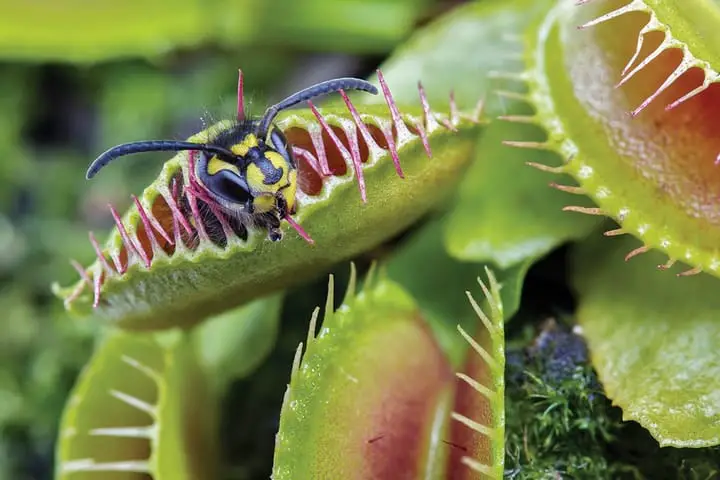
Brain Skewer
Once another hair is touched, the trap snaps shut. It does this to make sure it doesn’t trap unimportant things like raindrops or tiny bugs that don’t offer much food. But this “behavior” shows that the Venus flytrap has short term memory. Extraordinarily, it seems plants also have long term memory…
14. Plants can remember experiences
The mimosa plant closes its leaves whenever it’s touched or bothered. It does this to surprise insects that might want to eat it or to look less appealing to larger animals that also want to eat it. This response is weird enough in itself, but it gave researchers a great way to study plant memory. One scientist dropped mimosa plants about six inches onto a foam surface, over and over.
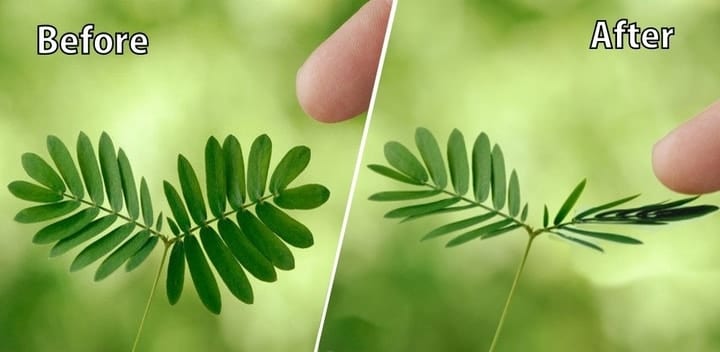
Science ABC
At first, the plants closed their leaves with each drop. But over time, they stopped closing their leaves at all. It seemed that the plants remembered falling and that it wasn’t harmful, so they stopped bothering to close up. When they were shaken (not stirred), they closed again, proving they weren’t just too tired. After a month, the plants still remembered the harmless drop.
15. Plants know who’s their family
Astoundingly, research has found several plant species that recognize if they’re surrounded by family or strangers. Evolutionarily, it’s very beneficial to help your family and not others, so plenty of animals do this too. Scientists aren’t quite sure how these plants know which are their kin and which aren’t, but they behave differently depending on who’s around them.
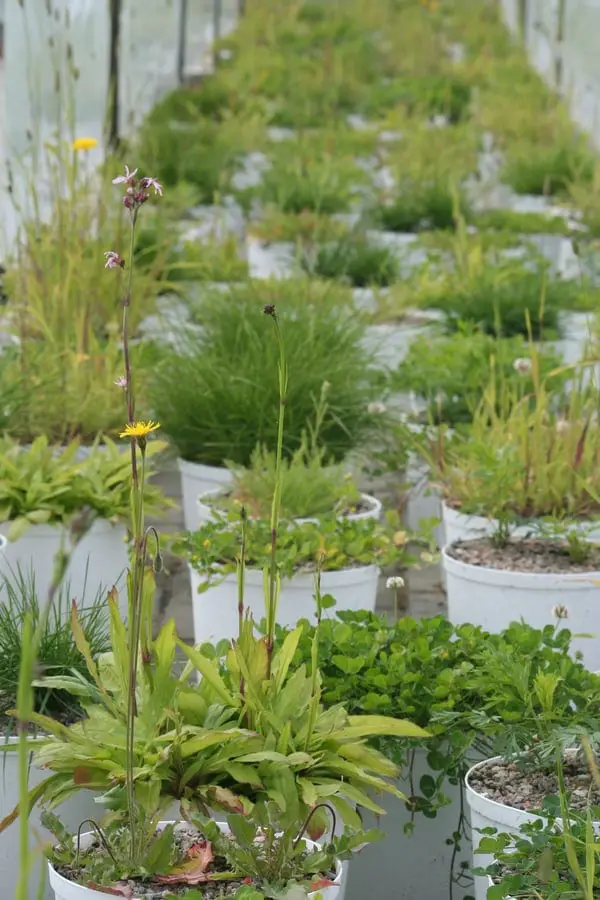
Functional Ecology
Research showed several plants altering their leaf growth or orientation, to keep themselves from casting shade on their family plants around them. Since plants need sun to make food, shade can be extremely detrimental. When the plants had strangers around them, they didn’t bother trying to keep shade off their neighbors.
16. Plants defend themselves
Plants certainly can’t run away from danger, like most animals can, so they have to defend themselves another way. And they sure have developed a whole arsenal of tools to use. For example, they can thicken their cell walls and the waxy covering on their leaves for added protection.
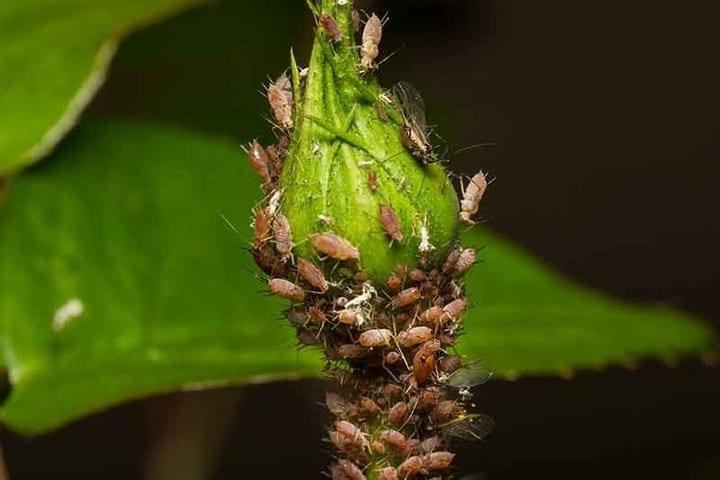
GardenTech
Plus, they can close the holes in their leaves that take in carbon dioxide and release oxygen. Every cell in a plant can detect invaders and defend against them. And if it’s getting out of hand, cells can self destruct to quarantine the area from microbe infection. But plants also make chemical compounds that can kill microbes or insects. Okay, so this isn’t all that similar to animals, but the next one is disturbingly so.
17. Plants feel their own kind of pain
You’ve probably wondered now and again what it would be like if your food could feel pain. It’d be pretty disturbing, perhaps more so than animal butchering because it’s literally in your face. Well then you probably didn’t want to know that plants have a similar response to animals when they’re damaged.
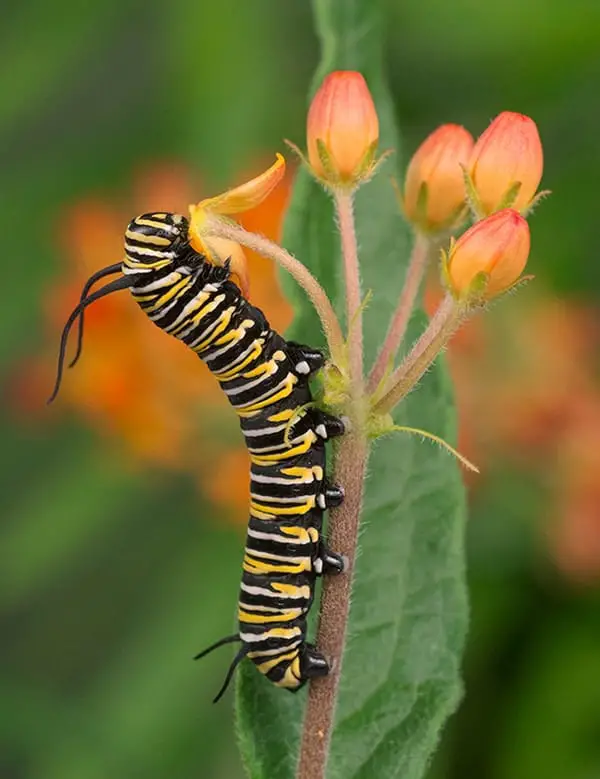
Alabama Butterfly Atlas University of South Florida
When humans feel pain, our bodies produce a chemical called glutamate, which then makes the brain make adrenaline. Our fight or flight response has been initiated. Well, plants can’t take flight, but they can fight. When a leaf is damaged, perhaps by a caterpillar, the plant similarly produces glutamate. This triggers a signal to travel throughout its body…
18. Plants have a nervous system-like response to being eaten
Plants probably don’t feel pain how we do, but they do have a similar response when harmed. Once the attacked area produces glutamate, it then causes a calcium signal to quickly travel throughout the whole plant. To see this, scientists genetically modified some plants so that they glowed near calcium. The scientists were able to see how the “pain” signal spread.
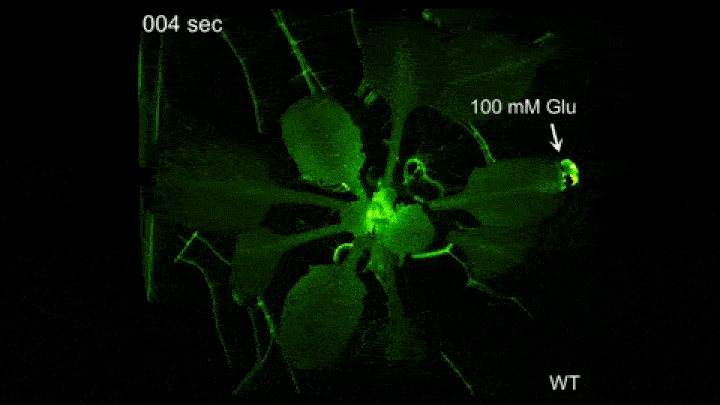
UW Madison
Once the rest of the plant receives the signal, it turns on its defenses. This plant made hormones to start repairing its leaves and produced a noxious chemical to ward off any animals. But their response doesn’t always stop there, some plants actually do something to help out their neighbors.
19. Plants communicate with each other
Just like a prairie dog alerts its family and Paul Revere warned Concord, plants tell their neighbors when they’re under attack. After a plant gets the signal from one of its leaves that it’s being eaten or torn, it can release airborne chemical compounds that warn nearby plants that there’s danger afoot.
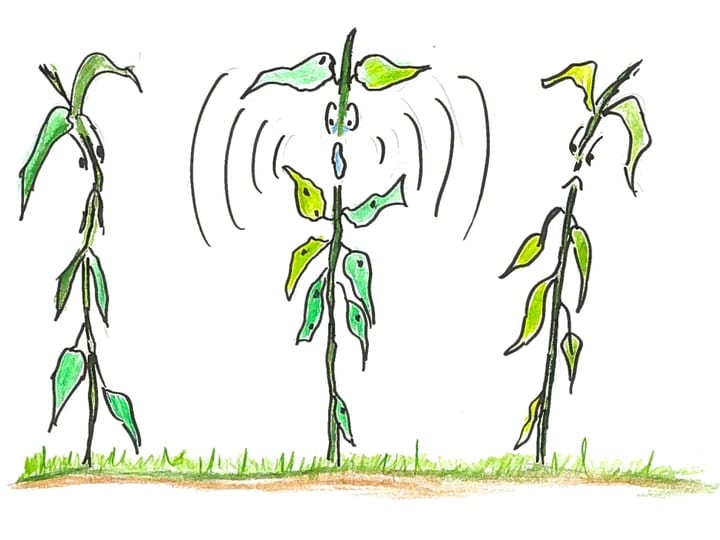
Vermont Public Radio
For example, tomato plants signal to other tomato plants, telling them to put up their insect defenses. And while plants can alert another part of their own body with hormones, electrical signals, and airborne molecules, they’ve come up with an entirely novel way to warn their neighbors. To find it, scientists had to look underground.
20. Trees have an internet of their own
Under the beautiful tall trees and lush foliage, lies an entire underground forest network. Some scientists have compared it to the brain and it’s been cleverly named the “Wood Wide Web.” Amazingly, this network connects trees of all kinds of different species. But the root of the connection is not actually a plant at all, but a little bitty fungus.
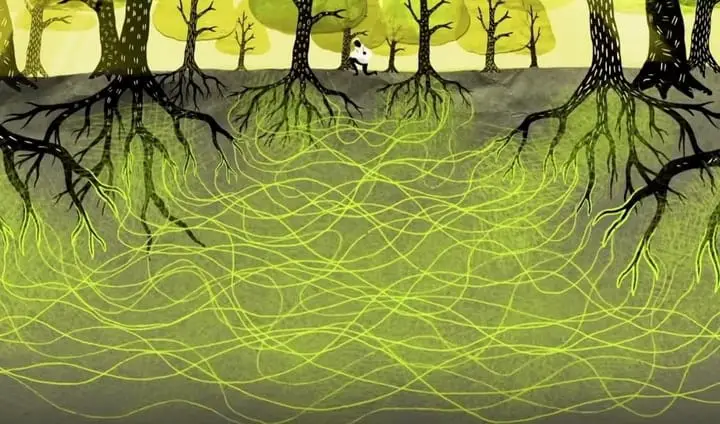
The Kid Should See This
This fungus looks like thin little white tubes, thinner than an eyelash, and it’s all over the roots of a forest. In one pinch of dirt, scientists found seven miles of the fungus. It acts as a way for the trees to communicate with each other. For example, they can send warning messages, alerting each other of danger and to set up defenses. However, this isn’t the fungi’s only job.
21. Trees exchange goods for services
Why would this fungus help out the trees and act as their internet? Well, the fungus isn’t just a fun guy, there’s a little exchange going on between them. Trees take carbon out of the air, and make food out of it. They give some of this to the fungus, who gives them nutrients, like nitrogen, in return.

The Tree Center
But trees use this network for other, very surprising reasons. They can use it as a bank, if they want to store carbon or loan it to another tree. Or if a tree is dying, it puts its carbon into the Wood Wide Web, and it usually ends up in a young tree. The forest seems to be working together, as a whole.
22. Plants can get cancer
On a bit of a sad note, plants can get cancer, too. Their cancer isn’t the same as ours, since they don’t have things like lungs or livers, but it can be harmful and deadly. Cancer is uncontrolled cell division, in which cells just keep making new cells even if they aren’t supposed to.
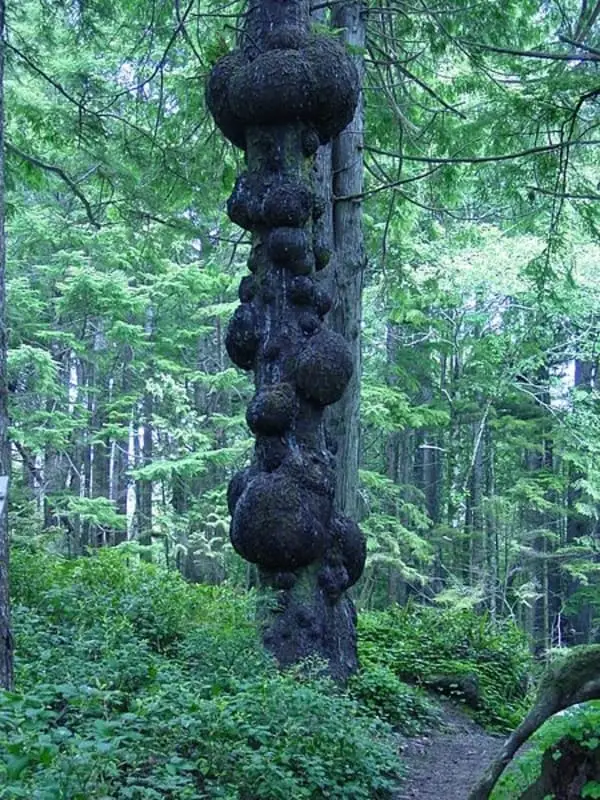
Lulu Belle Design
In plants, this looks like bulbous parts of tree trunks, leaves, and other parts. Plant tumors can’t spread like they can in animals, because cancer spreads through blood and plants don’t have blood. In animals, cells move around in the body, but they don’t in plants. Usually plants can live with these large tumors, but sometimes they become too much.
23. Some plants generate body heat
Most animals don’t regulate their body temperature, it’s primarily just something birds and mammals do. But some plants are “warm blooded” too, except of course they don’t have blood. They generate heat with their mitochondria, keeping their body temperature in a certain range. So why are these plants making themselves warm?
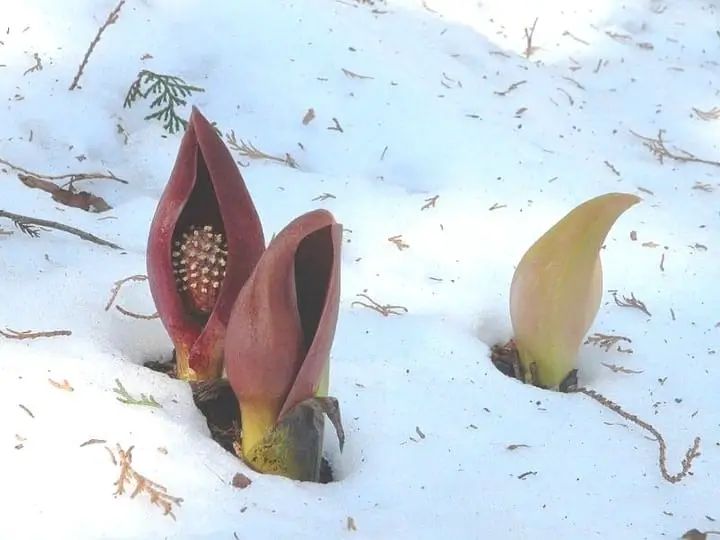
Botany Professor
Some do it too keep frost off or to melt snow and get pollinated before other plants. But a lot of these thermoregulating plants are in the tropics, so they have another reason. The dead horse lily is one of these, and produces heat to make itself stinkier. The heat amplifies their smell, which attracts pollinators like flies.
24. Plants can… lose consciousness?
There’s quite a lot of controversy in the science world over plant “intelligence” and “consciousness” but some researchers keep at it, regardless. For example, one recent study dosed plants with an anesthetic and showed that plants could actually lose consciousness. Or something. What exactly they’re losing is not quite clear.
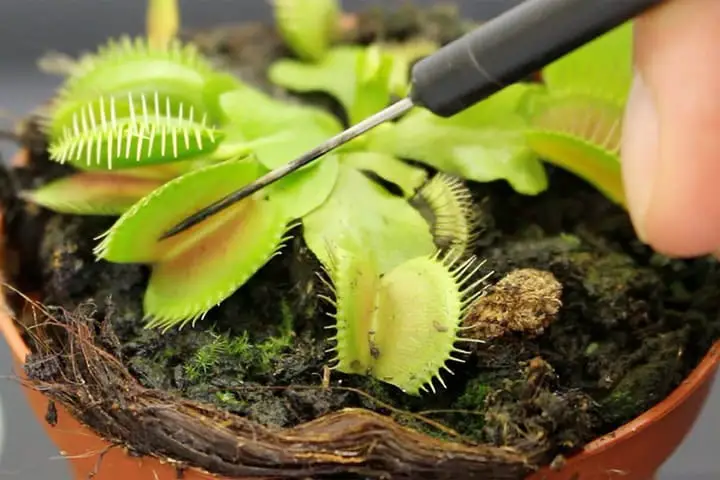
The New York Times
Anesthetics are used on humans to knock them out for surgery, but are plants awake enough to even be knocked out? They gave several types of plants anesthetics and they all became unresponsive. The Venus flytraps stopped trying to snap things up, so clearly something was going on. Anesthetics change cell membranes, so this is probably what’s affecting plants, too.
25. Plants make risky decisions
Your house plants don’t have many choices in life. You put them where you put them and they get no say. Well, one scientist gave his pea plants a decision: which pot do you want to grow your roots in? He split their roots between two different pots, one with fluctuating levels of nutrients and one with constant levels. And then he sat back and watched what they did.
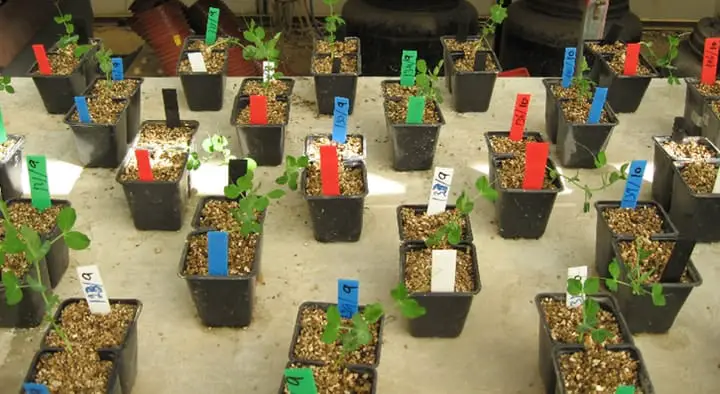
The New York Times
The plants followed the “risk sensitivity theory” that says an organism will choose predictability when everything’s going well, but will gamble when times are tough. The plants made the risky decision to choose the fluctuating pot when there weren’t a lot of nutrients in the other one. So plants can make decisions, when even some humans have trouble.
26. Are plants intelligent?
Plants have been fairly controversial in the scientific world. A lot of this evidence has led some scientists to believe that plants have a sort of “intelligence,” but plenty of others argue against this. The debate certainly hasn’t been settled yet, but interesting new evidence keeps popping up. Plants keep surprising us.

Click and Learn Photography
However, since much of this research is very new, it’s very possible that new data will come to light that changes our perspective on exactly what these plants are doing. But it is very clear that plants are very in tune with their environment, more so than animals, because they’re stuck in one spot.
27. Be careful with your animal-centric perspective
While plants have shown themselves to have a lot of surprising similarities to animals, they are still a completely different type of organism. We can’t view them with such an animal focused perspective, because they’re doing things in a different way, a way that we can’t really relate to.
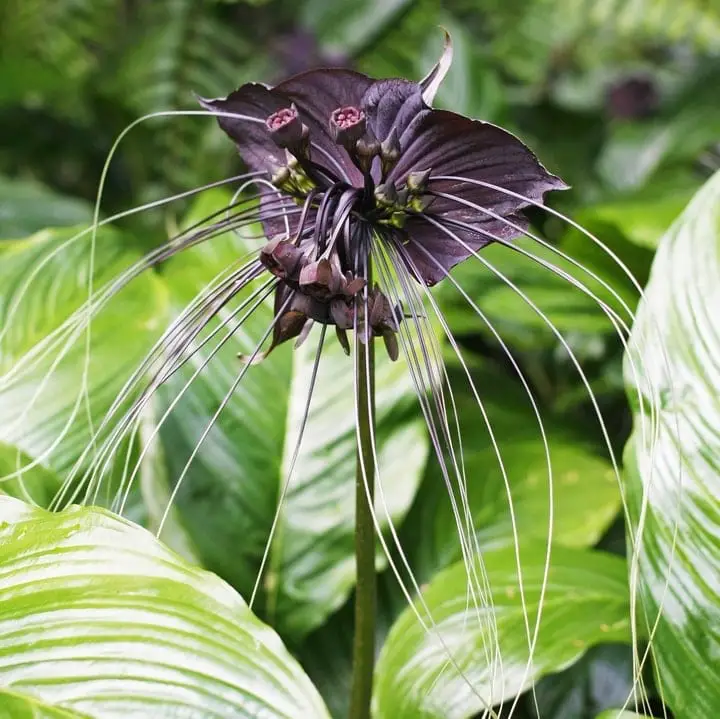
Easy To Grow Bulbs
Some people are already taking action towards changing how we interact with plants. Switzerland decided that the dignity of plants must be protected, particularly in scientific research. What exactly this means, is a little unclear. And dignity or not, the recent plant research definitely shows that we should respect our green friends. They’ve got a lot more going on than initially meets the eye.
28. BONUS: Animals that act like plants
Plants are known for photosynthesizing, aka making their own food from the sun. It’s kind of their thing. But a few animals have wormed their way into the club, amazingly. One of these is the Eastern Emerald Elysia, which is a very green sea slug.
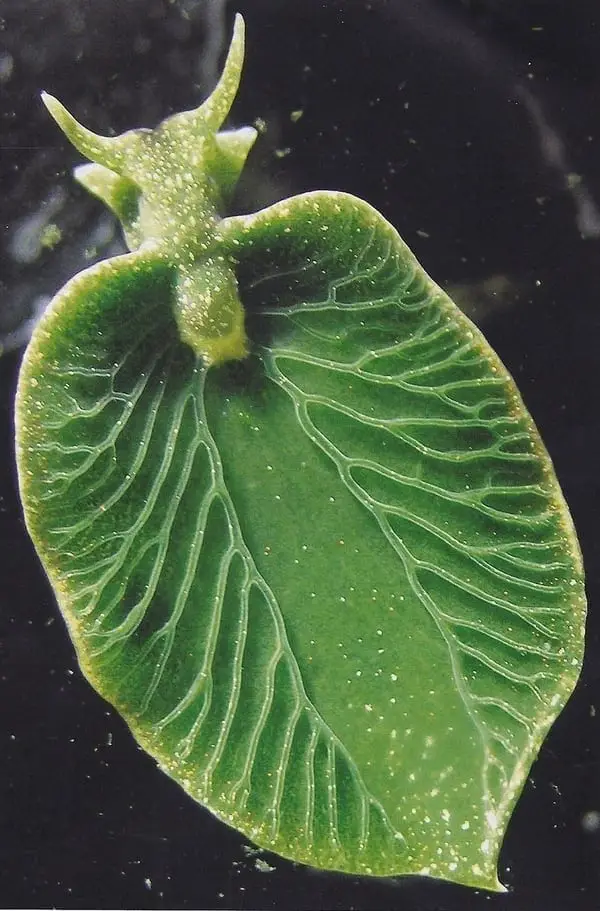
Pinterest
The slug eats a specific kind of algae, which it absorbs chloroplasts from. Chloroplasts are like a type of organ in cells that photosynthesize. So the slug takes chloroplasts and genes from the algae, in order to photosynthesize. The slug passes these genes onto its offspring, and they only have to eat about two weeks per year, photosynthesizing the rest of the time.
29. BONUS: Little green bugs
Another plant-like animal is the tiny pea aphid. Whether it got its name because it looks like a pea, eats peas, or acts like a pea, we may never know. However, pea aphids have the astounding ability to make their own carotenoids, which are pigments that help collect light for photosynthesis.
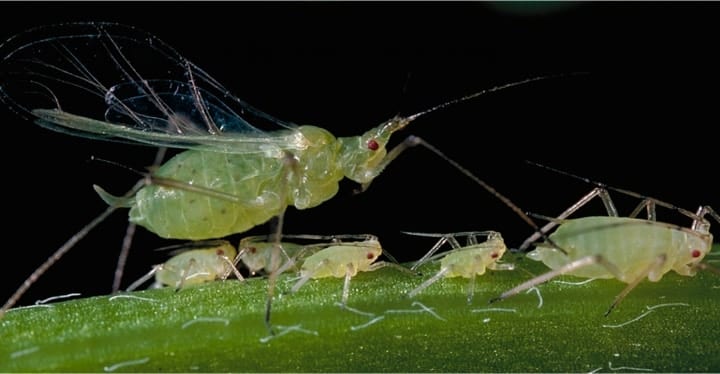
Western Farm Press
As far as we know, pea aphids are the only animal that can make carotenoids. Also, pea aphids come in a few different colors: white, orange, or green. And it turns out that the green aphids can actually make energy from the sun, like plants can. They’re really very weird.
30. BONUS: The salamander that eats the sun
Perhaps this next animal will teach us a way to make humans photosynthetic, too. It’s a salamander that has a very intimate relationship with a certain algae. Even before hatching, the algae is inside the salamander’s cells. But the salamanders don’t seem too upset about it.
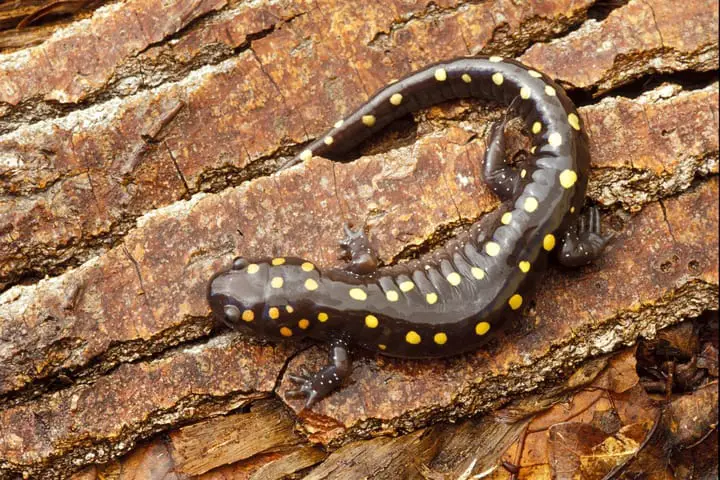
MDC Discover Nature
In some of the spotted salamander’s cells, the algae live happily. They photosynthesize, making energy from the sun. It seems that these algae-filled cells even help power the nearby cells. Generally, a vertebrate’s immune system would destroy any invaders, so it’s a wonder how this relationship began in the first place. Once we figure it out, maybe we can be photosynthetic, too.